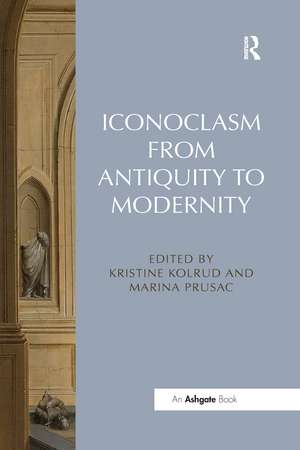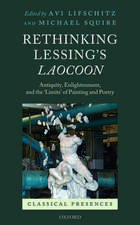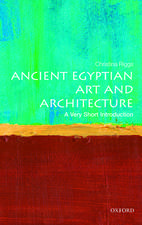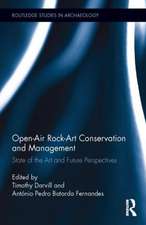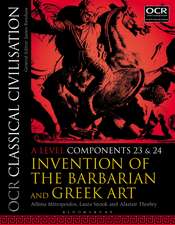Iconoclasm from Antiquity to Modernity
Autor Kristine Kolrud, Marina Prusacen Limba Engleză Paperback – 30 iun 2020
| Toate formatele și edițiile | Preț | Express |
|---|---|---|
| Paperback (1) | 257.68 lei 6-8 săpt. | |
| Taylor & Francis – 30 iun 2020 | 257.68 lei 6-8 săpt. | |
| Hardback (1) | 1002.80 lei 6-8 săpt. | |
| Taylor & Francis – 28 ian 2014 | 1002.80 lei 6-8 săpt. |
Preț: 257.68 lei
Preț vechi: 310.22 lei
-17% Nou
Puncte Express: 387
Preț estimativ în valută:
49.31€ • 51.48$ • 40.81£
49.31€ • 51.48$ • 40.81£
Carte tipărită la comandă
Livrare economică 05-19 aprilie
Preluare comenzi: 021 569.72.76
Specificații
ISBN-13: 9780367600983
ISBN-10: 0367600986
Pagini: 248
Dimensiuni: 156 x 234 mm
Greutate: 0.34 kg
Ediția:1
Editura: Taylor & Francis
Colecția Routledge
Locul publicării:Oxford, United Kingdom
ISBN-10: 0367600986
Pagini: 248
Dimensiuni: 156 x 234 mm
Greutate: 0.34 kg
Ediția:1
Editura: Taylor & Francis
Colecția Routledge
Locul publicării:Oxford, United Kingdom
Cuprins
Contents: Introduction - whose iconoclasm?, Kristine Kolrud and Marina Prusac; Disabling demonic images: regional diversity in Ancient iconoclasts' motives and targets, Eberhard W. Sauer; Presence and the image controversies in the 3rd and 4th centuries AD, Marina Prusac; Defacement and replacement as political strategies in Ancient and Byzantine ruler images, Bente Kiilerich; Byzantine iconoclasm: ideology and quest for power?, Anne Karahan; Neither iconoclasm nor iconodulia: the Carolingian Via Media, Thomas F.X. Noble; Iconoclasm and religious images in the early Lutheran tradition, Tarald Rasmussen; Iconoclasm on the frontier: Le Cateau-Cambrésis, 1566, Andrew Spicer; The Waldensians and the Piedmontese Easter of 1655, Kristine Kolrud; Iconoclasm - three modern cases, Jens Braarvig; Conclusion: iconoclasm in history and present-day use of images, Siri Sande; Bibliography; Index.
Notă biografică
Kristine Kolrud is Research Fellow in the History of Art at the Centre for Medieval Studies at Stockholm University. Marina Prusac is Associate Professor of Classical Archaeology, and Keeper of the Egypt and Antiquity Collections at the Museum of Cultural History, University of Oslo.
Recenzii
'These essays ask readers to reconsider their pre-existing assumptions about ideologically-motivated attacks on images and to see similarities between various iconoclasms in different times and places, from the early Christian destruction of pagan images to the Taliban's destruction of the giant Buddhas in Barniyan province in Afghanistan in 2001. Every essay offers it own, nuanced definition of iconoclasm...' The Art Newspaper 'Iconoclasm from Antiquity to Modernity is accessible to a wide range of academic backgrounds and its broad scope invites readers to make critical comparisons. The publication complements existing literature and its focus on pre-Reformation case studies offers a particularly valuable contribution to the expanding historiography of iconoclasm.' Journal of Art Historiography 'Iconoclasm from Antiquity to Modernity contains some papers of genuine originality and substance.' Art and Christianity 'Reflecting on the volume as a whole, the great strength is its presentation of iconoclasm throughout history. All of the essays take great care in showing the historical and political factors involved in each outbreak of violence against images ... Overall, the work deserves a broad audience since it raises important issues for a modern world saturated by digital images.' Heythrop 'The book is to be commended for bringing together such a diverse range of themes and periods, and offers a useful opportunity for readers to engage with the methodologies and debates beyond their individual disciplines. As such, it is an important contribution to establishing the study of iconoclasm as an avenue of historical inquiry for scholars of all regions and periods.' Catholic Historical Review
Descriere
The phenomenon of iconoclasm, expressed through hostile actions towards images, has occurred in many different cultures throughout history. The destruction and mutilation of images is often motivated by a blend of political and religious ideas and beliefs, and the distinction between various kinds of ’iconoclasms’ is not absolute. In order to explo
